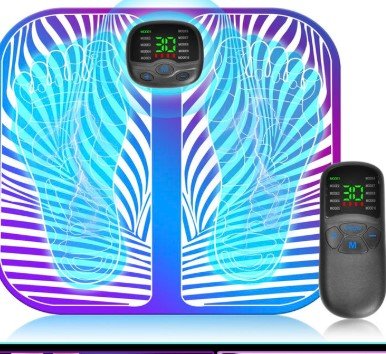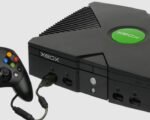Smart features, shifting wellness habits, and a demand for stress-free living are rewriting the rules for the electric massager industry
The once-humble electric massager is quietly going through a major upgrade. What used to be a bulky back-thumper gathering dust in your parents’ closet is now a sleek, AI-powered, app-controlled tool sitting next to your smartwatch and fitness tracker.
The global electric massagers market, valued at $20.3 billion this year, is projected to more than double in the next decade—hitting $42.5 billion by 2035. That’s an 8.5% CAGR, a pace that puts it in the same growth conversation as electric vehicles and digital healthcare.
This isn’t just about fancy features or trend-hopping. People are tired, stressed, aging, and increasingly fed up with pain meds. They want something that works, fits into their daily routine, and doesn’t feel like a clinical experience. Enter smart massagers.
From luxury to lifestyle: massagers now belong in your self-care toolkit
Ten years ago, a massage chair was the sort of thing you’d find in a mall kiosk or high-end hotel. Now, it’s something your yoga-loving coworker has next to their standing desk.
Part of that is pandemic legacy. As work-from-home culture settled in, so did new rituals around self-care. Consumers didn’t just want to feel better—they wanted control over how they felt better.
Devices like handheld percussion guns, heated shiatsu neck wraps, and compact foot massagers became household staples. They aren’t just feel-good tools; they’re stress busters, recovery aids, and even posture correctors.
One-sentence break here—this shift is real, not just market fluff.
Sales have particularly spiked in the 25–40 age group, a demographic often glued to screens and dealing with a cocktail of neck strain, back pain, and anxiety. Older adults, too, are turning to these devices as non-invasive ways to manage chronic pain without diving into pharmaceuticals.

Region by region: who’s leading the charge?
This global boom isn’t evenly spread. There’s a clear geographical rhythm to how different regions are using—and buying—these devices.
Let’s break it down:
-
Asia-Pacific: Dominates the market, especially in China, Japan, and South Korea. Long-standing cultural use of massage therapy blends with rapid tech adoption.
-
North America: Strong growth, thanks to an aging population, rising wellness awareness, and demand for smart gadgets.
-
Europe: Shoppers want quality and sustainability. Massagers here are judged on materials, durability, and multi-functionality.
-
Latin America: Brazil and Mexico are picking up pace. Urbanization, a growing middle class, and lifestyle shifts are driving purchases.
-
Middle East & Africa: Slower growth, but high-end hospitality and wellness tourism are opening doors for premium massage devices.
So while Asia sets the pace, other regions are catching up—just with slightly different consumer priorities.
Smart tech is the secret sauce
Let’s get geeky for a minute. Today’s electric massagers aren’t just vibrating lumps of plastic. They’re packed with tech.
These features aren’t just gimmicks. They’re making it easier for users to stay consistent with pain management, monitor recovery, and track patterns in their stress and muscle tension.
Here’s a quick look at what’s trending in the smart tech side of things:
| Feature | Description |
|---|---|
| AI-driven massage modes | Learns user preferences and auto-adjusts massage style and intensity |
| Mobile app integration | Users can schedule sessions, log symptoms, and get usage insights |
| Wearable massagers | Neckbands, shoulder wraps, and posture correctors designed for daily wear |
| Voice assistant compatibility | Works with Alexa, Google Assistant for hands-free operation |
| Heat & pressure customization | Real-time control over temperature and intensity for targeted relief |
The coolest part? Some of these devices now include biometric sensors that detect muscle tightness or heart rate changes and adapt accordingly. It’s like having a personal massage therapist with a data dashboard.
Wellness meets design: portability and aesthetics now matter
Massagers aren’t being hidden in drawers anymore. People are proudly displaying them on desks, travel bags, and even gym lockers.
Manufacturers have noticed. There’s now a big push to create massagers that not only feel good but look good too. Think matte finishes, ergonomic curves, USB-C charging, and cases that don’t scream “medical device.”
Portability is a big deal, especially for frequent travelers, hybrid workers, and digital nomads. Compact massage guns that fit in carry-ons or heated back pads that roll up like yoga mats are flying off shelves.
And with the rise of “wellness at work” programs, companies are even buying massagers in bulk for staff perks. A few forward-thinking startups have started massager subscriptions—yes, that’s a thing now.
This isn’t about vanity. It’s about convenience and normalizing self-care as part of the daily grind.
What’s next? Probably smarter, smaller, and more intuitive
The industry isn’t slowing down. If anything, it’s about to get weirder—in a good way.
Startups are experimenting with AI that maps your muscle memory. Others are exploring haptic feedback massagers that sync with VR meditation sessions. And don’t be surprised if Apple or Samsung eventually jumps in with a smart wellness accessory that vibrates your spine and syncs with Apple Health.
One-sentence break—yep, the line between healthtech and lifestyle gadgets is officially blurred.
The message is clear: electric massagers are no longer one-size-fits-all devices. They’re becoming as customizable and connected as the rest of your smart life.
And for a market that’s expected to double in the next ten years, this is just the warm-up phase.








